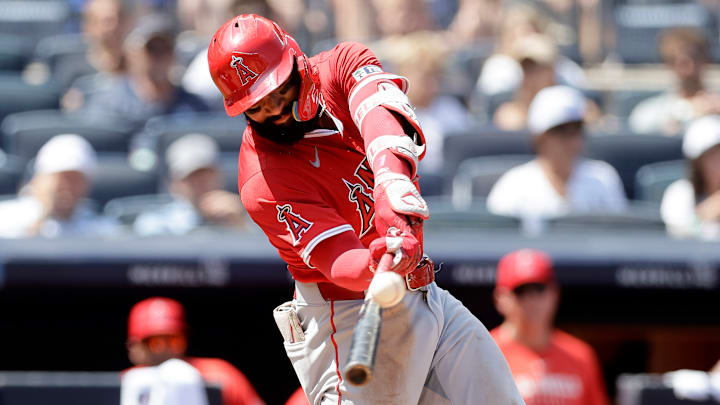The New York Mets are starting to write out their shopping list with the July 31 trade deadline fast approaching. At the top of that list is a new center fielder as the team looks to upgrade from the silky smooth glove but offensively challenged bat of Tyrone Taylor.
The two targets most commonly discussed in Mets circles are the Baltimore Orioles' Cedric Mullins and Luis Robert Jr. of the Chicago White Sox. While both players have name recognition, they each have some serious drawbacks to consider.
Both Mullins and Robert Jr. will cost a hefty price in prospects, and both will require significant financial outlays to retain beyond 2025, with Mullins hitting free agency and Robert Jr. having two pricey club options on the horizon. Furthermore, in the case of Robert Jr., it's been nearly two years since he was last a productive player. Given the cost, neither option is ideal.
However, and under the radar player who the team could target may only cost them Brett Baty, a player whose long-term future is murky at best in Queens, and would give the Mets a cost-controlled center fielder with upside for both the 2025 stretch run, as well as the foreseeable future.
A Mets-Angels swap of third baseman Brett Baty for Center Fielder Jo Adell makes too much sense for both sides
Let's get the elephant in the room out first. Neither Jo Adell nor Brett Baty has seen their careers go as planned. Adell topped out as Baseball America's No. 3 overall prospect in 2020, yet injuries and inconsistencies stunted his career, never logging more than 88 games in a single season until last year, when he posted a career-high 90 wRC+ in 130 contests.
Baty topped out at No. 32 in Baseball America's 2023 Top 100 rankings, yet has struggled mightily with the bat and failed to reach the potential that once had fans salivating.
This is much more than a change-of-scenery move. Both Adell and Baty have shown signs of life this season. Adell started off miserably over the first month, but he improved in May and has been on a tear in June, now owning a .222/.295/.481/115 wRC+ through June 20.
Baty, on the other hand, hasn't quite sustained the same upward trajectory. His .290/.338/.581 line in May has given way to a .125/.189/.250 performance thus far in June. Still, there have been some encouraging developments, such as his improving walk rate.
With the glove, Baty provides an edge, posting 2 defensive runs saved at the hot corner while Adell has had some adventures in center field, as evidenced by his -6 DRS. Still, Adell came up as a right fielder and started his career as a poor defender before becoming a Gold Glove finalist last year, posting 6 DRS.
Adell is supremely athletic, making it likely he eventually adjusts and levels out his defensive performance in center as he gains experience. With the bat, he will whiff too much, but when he makes contact, watch out. His bat speed ranks in the 99th percentile, his barrel rate is in the 91st percentile, and his hard hit rate and average exit velocity also rank favorably, coming in at the 76th and 67th percentiles, respectively.
Adell would give the Mets a power bat with 30 home run potential to roam center field, at the cost of Baty, who looks to be the odd man out in the infield going forward. Adell doesn't hit free agency until 2028, giving the Mets a potential answer both now and in the future.
For the Angels, they can part with Adell as they have prospects like Matthew Lugo and, perhaps eventually, Nelson Rada who can replace him long term. They boast a promising young infield with shortstop Zach Neto, 24, first baseman Nolan Schanuel, 23, and have welcomed top prospect Christian Moore, 22, to man second base, but have no long-term solution at third.
In that way, this trade fits like a glove. Baty would give the Angels the missing piece to their infield of the future, while Adell could add some much-needed pop to the bottom of the Mets lineup while holding down center field for years to come.
